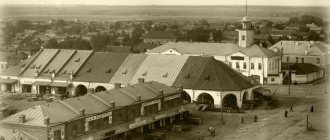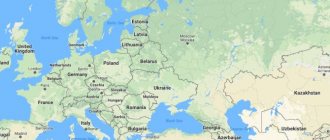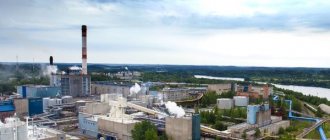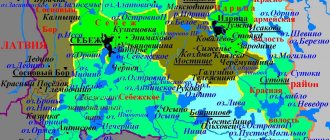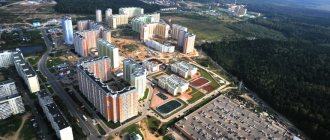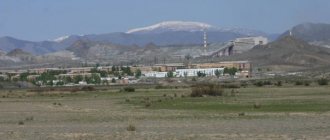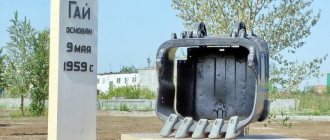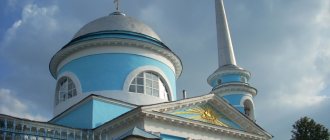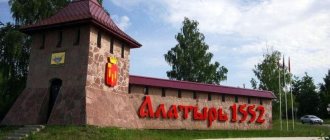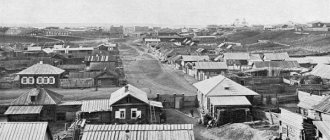The first time the city of Porkhov, Pskov region, was mentioned in written chronicles was in 1239. Prince Alexander ordered the construction of guard fortifications at this place to protect the waterway to Novgorod. And a fortress built of stone still stands in the city, although Porkhov itself was badly damaged during the hostilities. The ancient architecture could not be restored.
Porkhov Museum of Local Lore
So, we present to you the ancient Porkhov, attractions, photos with descriptions, videos, and also invite you to visit Pskov with it.
Any visit to Porkhov - planned or spontaneous - should start with the local history museum if you are interested in a description of the history of the region. Today the Porkhov Museum includes several stationary objects:
- House of Crafts.
- The first museum building on the territory of the fortress.
- The second building of the museum.
- Exhibition "Museum of Postal Service".
- Showroom.
The museum conducts master classes on introducing and teaching folk crafts: weaving and weaving. You can independently explore the displays and exhibitions in all departments, or book a tour. But the best option is, nevertheless, a trip to Porkhov with “Charm Travel”, during which you will be accompanied by professional guides, and you will learn the history of the town in the best and most interesting presentation.
In the museum you can not only see antiques, household utensils and furniture, but also hear the sounds of a real gramophone
Links[edit]
Notes[edit]
- ^ abcd Law No. 833-oz states that the boundaries of administrative districts are identical to the boundaries of municipal districts. Law No. 420-oz, which defines the boundaries and composition of municipal districts, classifies the city of Porkhov as a Porkhov district.
- ^ abcd Encyclopedia of Russian Cities
. Moscow: Great Russian Encyclopedia. 2003. p. 360. ISBN 5-7107-7399-9. - ^ a b Federal State Statistics Service (2011). “All-Russian Population Census 2010. Volume 1" [All-Russian Population Census 2010, vol. 1]. All-Russian Population Census 2010 [All-Russian Population Census 2010]
. Federal State Statistics Service. - "26. The size of the permanent population of the Russian Federation by municipalities as of January 1, 2022". Federal State Statistics Service. Retrieved January 23, 2022.
- ^ ab State Committee of the Russian Federation on Statistics. Committee of the Russian Federation for Standardization, Metrology and Certification. No. OK 019-95 January 1, 1997 “All-Russian classifier of objects of administrative-territorial division. Code 58 247", ed. changes No. 278 / 2015 dated January 1, 2016. (Goskomstat of the Russian Federation. Committee of the Russian Federation for Standardization, Metrology and Certification. No. OK 019-95 January 1, 1997. Russian classification of administrative divisions) (OKATO).
Code 58 247 , as amended by Amendment No. 278/2015 of 01/01/2016). - ^ abcd Law No. 420-oz.
- Federal State Statistics Service. Federal Agency for Technological Regulation and Metrology. No. OK 033-2013 January 1, 2014 “All-Russian classifier of municipal territories. Code 58 647 ". (Federal State Statistics Service. Federal Agency for Technological Regulation and Metrology. No. OK 033-2013 dated January 1, 2014. Russian classification of municipal territories. Code 58 647.
). - "On the Calculation of Time". Official Internet portal of legal information
. June 3, 2011. Retrieved January 19, 2022. - Post office. Information and computing center of OASU RPO. ( Post office
).
Search for postal service objects ( postal Search for objects
) (in Russian) - ↑
Federal State Statistics Service of Russia (May 21, 2004).
“The population of Russia, the constituent entities of the Russian Federation as part of federal districts, urban settlements, settlements, settlements of 3 thousand or more people” [Population of Russia, its federal districts, federal districts, districts, urban settlements, rural settlements - administrative centers and rural settlements with a population of more than 3,000 people] (XLS). All-Russian Population Census of 2002 [All-Russian Population Census of 2002]
. - “All-Union Population Census of 1989. The actual population of union and autonomous republics, autonomous regions and districts, territories, effects, urban settlements and rural areas. Pskovskaya Pravda”, No. 20, February 10, 2009 (Pskov Regional Council of Deputies. Law dated 5 February 2009 No. 833-oz " On the administrative-territorial structure of the Pskov region
. Comes into force from the date of official publication). - Pskov Regional Assembly of Deputies. Law No. 420-oz of February 28, 2005 “On the establishment of boundaries and the status of newly formed municipalities in the territory of the Pskov region,” as amended. Law No. 1542-OZ of June 5, 2015 “On amendments to the Law of the Pskov Region” On the establishment of boundaries and the status of newly formed municipalities in the territory of the Pskov Region “”. Came into force on the date of official publication. Published: “Pskovskaya Pravda”, No. 41–43, No. 44–46, No. 49–51, March 4, 2005, March 5, 2005, March 11, 2005 (Pskov Regional Council of Deputies. Law of February 28, 2005 No. 420-OZ “ On the establishment of boundaries and the status of newly formed municipalities in the territory of the Pskov region”
as amended by Law No. 1542-OZ of June 5, 2005, 2015.
On amendments to the Law of the Pskov region “On the establishment of boundaries and the status of newly formed municipalities on the territory of the Pskov region"
. Valid from the date of official publication.). - Archive department of the Pskov regional executive committee. State Archive of the Pskov Region. “Administrative-territorial division of the Pskov region (1917–1988). Directory". ( Administrative-territorial structure of the Pskov region (1917–1988). Directory.
) Book I. Lenizdat, 1988
Porkhov Fortress
The Porkhov Fortress (Pskov Region) occupies the central part of the city and rises on the high bank of the Shelon River.
The date of its foundation is considered to be 1239, and the initiator of construction is Alexander Nevsky
The stronghold was erected to strengthen the waterways of Rus', as well as to repel the claims of warlike neighbors.
Now the fortress is the most famous landmark of Porkhov. With the exception of a few sections, its fortress walls have been preserved almost along its entire length. Having examined it, you can imagine how well fortified and powerful it was in its time. In addition to the fortress walls themselves, the stronghold was surrounded by high – up to 4 meters – ramparts and deep ditches along the perimeter.
History[edit]
One of the fortress towers
It is believed that the Porkhov fortress was founded in 1239 by Alexander Nevsky. [2] The wooden fortress was plundered by Algirdas (Olgerd) in 1356 and burned down in 1387. The Novgorod Republic immediately rebuilt its limestone fortifications 1.3 km downstream. In 1428, the Grand Duke of Lithuania Vitovt destroyed the western wall with artillery fire and entered Porkhov. Two years later, the Novgorodians enlarged the fortress and rebuilt its walls. After the fall of Novgorod to Muscovites in 1478 [2], the fortress lost its military significance.
Porkhov was the second most important city of Shelon Pyatina after Russa. However, it was not a significant economic center - in the 15th century there were only 76 households, and almost all of them were peasant ones. [12]
During World War II, Porkhov was occupied by German forces from July 11, 1941 to February 26, 1944, and was the site of a concentration camp. [2]
Unfinished obelisk to the victims of the German concentration camp near Porkhov
The city of Porkhov, together with the Porkhov district, was transferred to the newly formed Pskov region from the Leningrad region on August 23, 1944 [13].
St. Nicholas Church
The city of Porkhov, whose sights are in every tourist guide, can be proud of them. One of the most interesting monuments is the ancient St. Nicholas Church from the 15th century. It is located on the territory of the fortress, and when you come for a walk around the town, you will certainly see a monument of ancient architecture.
The church was rebuilt more than once: first, a new building made of limestone slab was built on the old foundation, and in the 19th century the bell tower on the temple was “kicked out”
It is known that it was in the St. Nicholas Church that relics were kept, the importance of which for the city is difficult to overestimate: a cross with the relics of the Kiev Pechersk saints and the icon of St. Nicholas. After 1917, the cross disappeared without a trace, and the icon can be seen in the Pskov Museum.
Noble estates
Porkhov in the Pskov region is also famous for its estates. Only a few of them have survived to this day; the rest require restoration and are still considered unsafe for visiting. The most famous estates:
- Stroganov;
- Gagarins.
In the village of Volyshevo, which is located in the vicinity of the city, the rich estate of the Stroganov family still stands. Previously, there was a huge manor's courtyard with several outbuildings and an ancient park. The Stroganov men bred Arabian horses for a long time, so they built a large stable. Although the noble family loved luxury and comfort, the estate was more like a huge farm.
Today, of the magnificent structure with all its outbuildings, only two buildings have survived. And local authorities are still trying to secure funding for their restoration. Only the garden and park complex remains in good condition. There are few plants and sculptures here, but they are kept in good condition.
The Gagarin estate is better known . The outstanding rector of the Polytechnic University of St. Petersburg, Andrei Grigorievich, was its owner. But after the revolution in 1917, the buildings were made available to the Leningrad House of Arts. Its management decided to open a recreation center for creative individuals in the estate. At one time, Zoshchenko, Slonimsky, Khodasevich, Zamyatin vacationed here.
Later they spoke positively about the estate, colorfully describing its architectural style and interior.
But after the collapse of the Soviet Union, the building was transferred to the ownership of the Polytechnic University. The educational institution restored the estate to the best of its ability. Architect Ivan Fomin built a manor house in the neoclassical style on the site. Today it is open to the public.
The city authorities have already planned the restoration of other buildings. They want to restore cascading ponds, a greenhouse, a park with gazebos and fountains, and an orchard. In the future, excursions will be held here, artists and writers will gather for conferences and seminars. But so far all that remains of the estate are dilapidated buildings, and all the outbuildings and plantings are in disrepair.
Noble estates
In the Pskov region there are two dozen ancient noble estates, the historical value of which is difficult to overestimate. And 10 architectural monuments are located in the Porkhovsky district. So, if you are planning a trip to Porkhov, make a note of visiting the two most famous noble “nests”:
- Stroganov estates.
- Estates of the princes Gagarins. (“Kholomki”).
It is sad that in the summer of 2022, one of the estates - in Volyshevo - was damaged as a result of a strong fire
In the future, excursions around the former property of the Vasilchikovs-Stroganovs will resume, but at present a full tour of the sights is impossible.
As for the estate of the princes Gagarins, the famous “Kholomki”, it is in very good condition, and you can take a walk in the park adjacent to the house, see the surrounding area, evaluate the condition of the interior, and admire the well-chosen location.
Population and economy
The settlement got its name from the word “gunpowder”. But during the construction of the fortress, this term had a different meaning - dust. According to ancient legend, Prince Alexander chose for construction a place where limestone dust was constantly rising into the air.
But historians are inclined to another version of the origin of the name. The word “porkh” in the old Russian language meant “white stone”. That is, it pointed to limestone, which is still mined in the vicinity of Porkhov. And local residents remember one of the commanders, whose name was Porkh. It is believed that the city received its name in his honor.
Porkhov acquired city status only in 2005; before that it was just a settlement. Its population was constantly changing. But in recent years, there has been an excess of mortality over the birth rate. The first recorded count was 5,900 in 1856. Forty years later, 5,300 people lived in the city, and by 1926 the number had grown to 8,000.
The population decreased during the war years, but then increased sharply: 10,661 people by 1970. The maximum figure was in 1998 - 13,800. Over the past five years it has only been decreasing:
- 2015 - 9336 people;
- 2016 — 9172;
- 2017 — 8926;
- 2018 — 8743;
- 2019 — 8535.
In terms of population, the city of Porkhov in the Pskov region is in last place among all cities of the Russian Federation.
Previously, a hydroelectric power station operated in the area. But now it is used as a tourist site. Already in 2006, its mechanical parts were disassembled, which made it possible to examine the internal components of the gearboxes.
Today, a butter and cheese factory and a pig breeding complex operate on the territory of the city. The majority of the working population is employed in these enterprises. Some work in larger nearby cities. And those living in the vicinity of Porkhov are engaged in agriculture: they grow vegetables, grain crops, and fruits.
Public transport is represented by only two buses. One runs from the Popadinka stop to Shelonsk, and the second from Syrzavod to Polonoye. Local residents also have cars.
Nikandrova Holy Annunciation Hermitage
What to see in Porkhov in 1 day? Of course, the monastery in the Nikandrova Holy Annunciation Hermitage, which was restored over many years. You won’t see ancient architecture there, but the way the cells, utility rooms and cathedral look today deserves attention.
Nikandrova Pustyn is a place of prayer, known for its strong healing energy and multiple healings.
People come here to be away from the bustle of the world, think about the eternal, pray, drink holy water and take it with them. On the territory of the Nikandrova Desert there are several springs with life-giving water:
- Petropavlovsky.
- Icons of the Kazan Mother of God.
- Nikandrovsky.
- Life-giving cross.
- Ave. Alexander Svirsky.
Each of them has special properties, which you can learn about by taking an excursion to the Nikandrova Desert with Sharm Travel.
Porkhov
(Pskov region)
OKATO code:
58247501
Founded:
1239
City since:
1239 City of district subordination (Porkhovsky district, Pskov region)
Center:
Porkhovsky district
Telephone code (reference phone)
| 81134***** | 21-0-60 |
Deviation from Moscow time, hours:
0
Geographic latitude:
57°46′
Geographic longitude:
29°33′
Altitude above sea level, meters:
55 Sunrise and sunset times in the city of Porkhov
Church of the Transfiguration
The church was originally built from stone slabs. From the 15th century until 1764 there was a monastery here, which was abolished by the will of the reigning empress. In the second half of the 18th century, the church building was completely rebuilt with funds from the private fund of Major General P. M. Panteleev. Today the temple is a typical example of provincial baroque.
After 1990, the church was renovated and today services are held there.
If you are attracted by an impressive list of Porkhov sights with photos and videos, book a tour with Sharm Travel and you will see not only its architectural and historical monuments, but also the Pskov Kremlin and other ancient towers and fortresses of Rus'.
